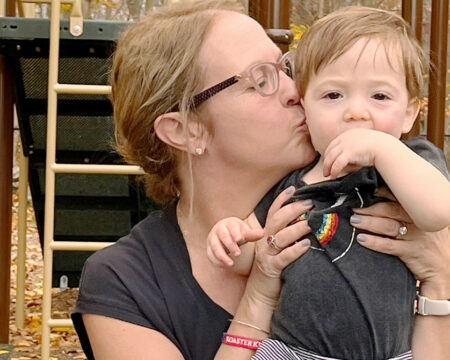As California’s First Partner and a mother, here’s how I’m addressing tech addiction in kids
Conversation and connection are critical ingredients to building and sustaining healthy relationships between kids and technology.

As a working mom with four young kids, I know firsthand how difficult this pandemic has been on our families. After almost two years of on and off again in-person school, too much screen time, and an increase in technology across the board in our families’ lives, we are all looking for solutions to manage our kids’ well-being as it relates to media consumption. Solutions that help us, as parents, address the overwhelm—all while keeping our kids “tech safe.”
Soon after I stepped into the role of First Partner of California, I co-founded the California Partner’s Project (CPP) to amplify the work I was doing as First Partner supporting children’s mental and physical health, as well as providing families with tools to help kids build a solid learning foundation. As a mom, I wanted to reach out and connect with other moms to better understand their family’s experiences with technology, and what they needed to help their kids overcome the downsides of media saturation. So, over the last year, I led a virtual listening tour with moms across California to hear firsthand about the influence media and technology were having on their kids’ health and wellbeing.
Not surprisingly, I listened to countless moms discuss the saturation and overwhelm of tech in their kids’ lives. Collectively, parents shared their challenges in safeguarding their children from anxiety-fueled news coverage and exposure to hypersexual and violent social media and content online. Many talked about being unable to enforce video game boundaries with their children. All of this is understandable given that kids have experienced so many new norms and had so few options to socialize over these past two years.
Session after session, the moms I listened to shared their anxiety and fears about their kids’ technology addiction. Not only did some kids not leave their homes more than a few times over the course of an entire year, but some hadn’t even left their bedrooms since the onset of the pandemic.
Faced with challenges like these, it’s easy to feel like we’re navigating uncharted territory on our own—whether we work outside of the home or not. But throughout the listening tour, I found comfort in this community as mothers came together to provide support for one another and share best practices for how to navigate these stressful times. The listening tour conversations offered us all a transformative lesson: we are never as alone as we think we are.
So after listening to moms, CPP and I committed ourselves to empowering parents with responsive toolkits containing best practices, tips, and recommendations to tackle mental health issues and concerns about technology head-on. Our team consulted experts including psychologists, pediatricians, educators, and mental health professionals to tailor each toolkit with practical approaches.
Here’s what we found: Conversation and connection are critical ingredients to building and sustaining healthy relationships. In order to raise healthy, whole, and resilient kids, parents and caregivers need to be aligned on the rules and expectations in their homes. By showing a united front and incorporating their children’s input as they age, negotiations around tech and media consumption will be easier to address. As a result, kids will feel seen and heard, which will, in turn, lead to better outcomes overall.
For my family, this means carving out intentional time away from our devices. One of the easiest ways we do this is by incorporating the outdoors into our family schedule and traditions like visiting California’s state parks. These moments allow us to explore nature, disconnect from the online world, reconnect with each other, and reap the physical and social-emotional benefits that the outdoors offers.
We also prioritize family time at the dinner table. Especially during times when my kids are struggling or acting out, we use family dinners as opportunities to pause and share something we’re grateful for. As a mom, I know how important it is for my kids to share openly and put their emotions in perspective. Rituals like family dinners help us practice mindfulness, gratitude, and listening to each other.
My husband and I are also passionate about reinforcing empathy toward others in our kids and instilling a sense of duty and purpose in them. After all, some of the happiest people in the world are those who regularly incorporate service and volunteerism into their lives, which is why we always look for volunteer opportunities that we can participate in as a family—not only because they offer an alternative activity to social media and tech use, but because they also allow our kids to give back and cultivate a greater sense of community and interconnectedness. Through California Volunteers, for example, we had the chance to visit and welcome a family that had recently resettled in California from Afghanistan. I really cherish moments like this immensely.
Parenting today is hard. I would argue it’s more complex than it was 30 years ago. Many of us are working mothers who are also saddled with too many pressures at work. And so while there are ways we can support balanced and healthy tech use with our kids, I’m extremely mindful that we can’t put the entire responsibility on individual parents alone. This is also why California-based technology companies must do their part. They need to take responsibility for the addiction their products can create, and most importantly, better open the dialogue so they can listen to parents, coaches, and educators to ensure their technology contributes to bettering kids’ lives. I’m committed to elevating the voices of parents and making sure that the companies who call California home understand that we want and expect more from them for our children.


